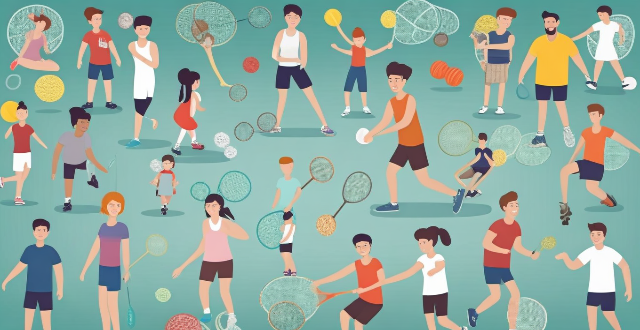Adaptive sports are modified or specially designed physical activities for people with disabilities, promoting fitness, health, and inclusion. They offer opportunities for competition and social interaction. Popular adaptive sports include wheelchair basketball, racing, and tennis; sitting volleyball; para swimming; track and field events for amputees; goalball; para alpine skiing; and beep baseball for the visually impaired. These sports provide physical benefits and opportunities for personal growth, independence, and social integration.

Adaptive Sports for People with Physical Disabilities
Adaptive sports are physical activities that have been modified or specially designed to accommodate individuals with disabilities. These sports aim to promote fitness, health, and inclusion while providing opportunities for competition and social interaction. Here are some popular adaptive sports for people with physical disabilities:
Wheelchair Sports
Wheelchair Basketball
- Objective: Score points by throwing a ball through an elevated hoop.
- Modifications: Players use wheelchairs instead of standing.
- Benefits: Improves upper body strength, cardiovascular endurance, and teamwork skills.
Wheelchair Racing
- Objective: Race against other athletes using wheelchairs.
- Modifications: Athletes push themselves using their arms.
- Benefits: Builds arm strength, speed, and endurance.
Wheelchair Tennis
- Objective: Play a game of tennis with modifications for wheelchair users.
- Modifications: Lower net height, different court dimensions, and specific rules.
- Benefits: Enhances hand-eye coordination, agility, and strategic thinking.
Amputee Sports
Sitting Volleyball
- Objective: Play volleyball from a seated position.
- Modifications: Players sit on the floor and use their hands to hit the ball over the net.
- Benefits: Promotes core strength, balance, and quick reflexes.
Para Swimming
- Objective: Compete in swimming races with classification based on disability type and extent.
- Modifications: Different stroke techniques and start methods depending on the athlete's impairment.
- Benefits: Increases cardiovascular fitness, muscle strength, and flexibility.
Track and Field Events
- Objective: Participate in running, jumping, and throwing events adapted for amputees.
- Modifications: Use of prosthetic devices and specialized equipment such as javelin crutches.
- Benefits: Improves overall fitness, coordination, and confidence.
Visually Impaired Sports
Goalball
- Objective: Score goals by rolling a ball with a bell into the opponent's goal.
- Modifications: Players wear blackout masks and play on a smaller court with raised boundaries.
- Benefits: Enhances auditory perception, communication skills, and teamwork.
Para Alpine Skiing
- Objective: Race down a ski slope at high speeds while avoiding obstacles.
- Modifications: Guides provide verbal instructions to visually impaired skiers.
- Benefits: Boosts balance, agility, and mental focus.
Beep Baseball
- Objective: Play baseball with sound cues for visually impaired players.
- Modifications: Balls make noise when pitched or hit, and bases have speakers that emit sounds.
- Benefits: Develops listening skills, hand-eye coordination, and social interaction.
These adaptive sports not only offer physical benefits but also provide opportunities for personal growth, independence, and social integration for individuals with physical disabilities.